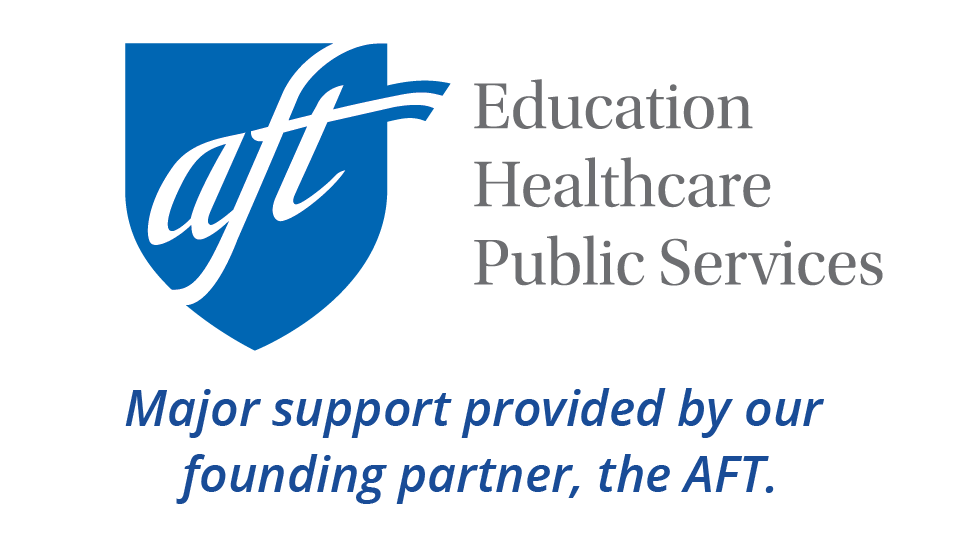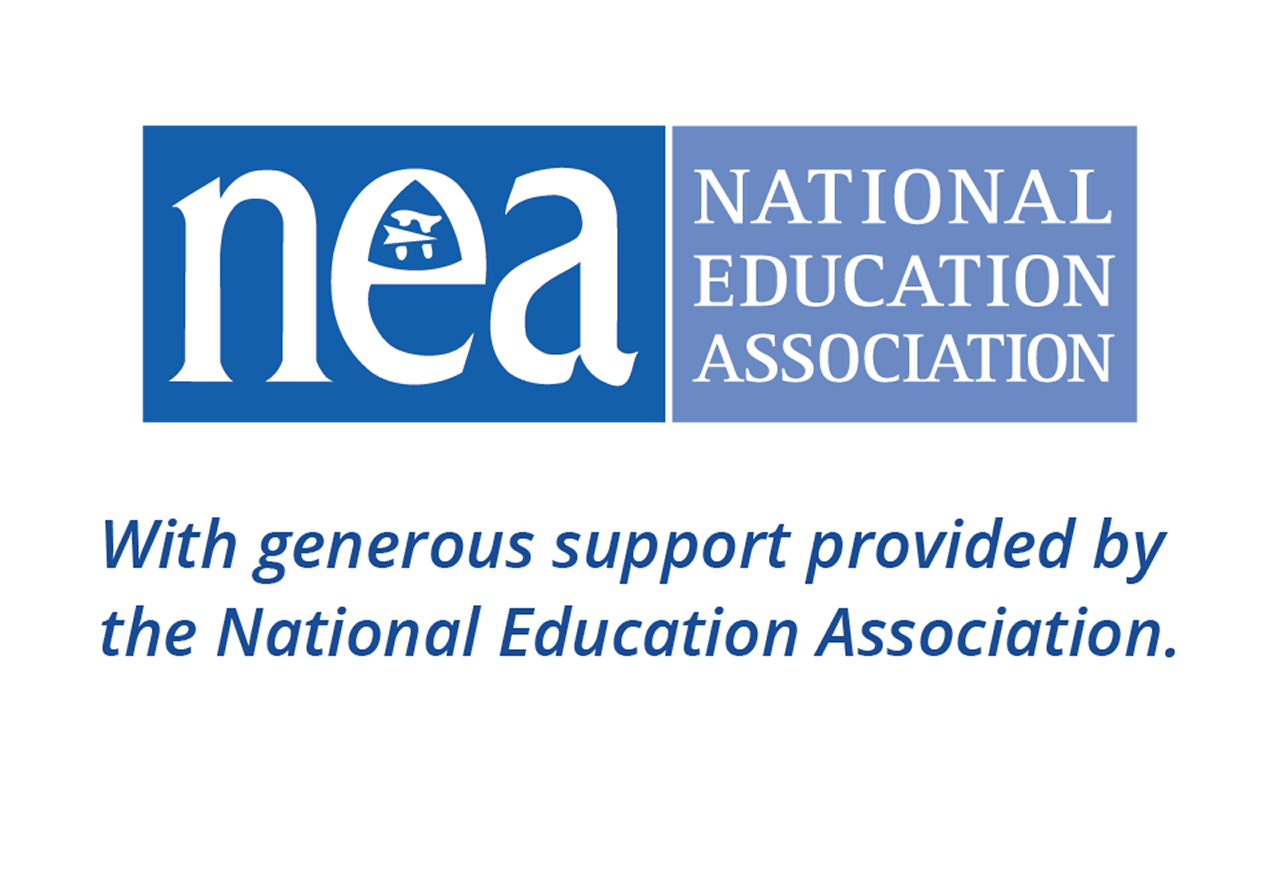Immigration policy affects a wide range of groups connected to K-12 schools and higher education, including students and their families, as well as staff. However, schools and individual educators can play an important role in partnering with students, families, and staff during uncertain times. The following information focuses on Deferred Action for Childhood Arrivals (DACA).
Note: We have selected a range of resources providing useful information for schools and educators. While some of this material includes advocacy information, Colorín Colorado and our parent organization, public broadcasting station WETA-TV-FM, do not take political positions or participate in political advocacy. In addition, if your students or families are looking for legal advice, we strongly encourage you to collaborate with immigration attorneys or organizations who have the most updated information possible.
Photo credit: PBS NewsHour, 2017.
What is DACA?
Deferred Action for Childhood Arrivals (DACA) is a policy passed by President Barack Obama through executive action in 2012 focused on undocumented youth who have lived in the U.S. since childhood, often referred to as "Dreamers". DREAM Act legislation has been introduced multiple times to address their situation, but has not yet successfully made it through Congress.
This summary from NPR provides a helpful overview:
DACA is the acronym for Deferred Action for Childhood Arrivals, a program created in 2012 by the Obama administration allowing young people brought to this country illegally by their parents to get a temporary reprieve from deportation and to receive permission to work, study, and obtain driver's licenses.
DACA applicants had to be younger than 31 years old when the program began. They also had to prove that they had lived in the United States continuously...and that they had arrived in the U.S. before the age of 16.
Those signing up for DACA must show that they have clean criminal records. They have to be enrolled in high school or college, or serve in the military. Their status is renewable every two years.
You may see references to the young people who have applied for DACA as "DACAmented." DACA policy impacts a wide range of groups served by K-12 schools and higher education, including: students in high school, college, and graduate school; young professionals, including thousands of teachers working across the country; and children whose parents and older siblings may be affected.
Updates: For questions and updates related to DACA, see this DACA resource guide from the Immigrant Legal Resource Center. Any families or staff with questions should consult with verified immigration lawyers (and determine that they are legitimate attorneys).
Meet Teachers with DACA
This program originally aired on the PBS NewsHour on 4/25/17.
DACA: FAQs and News
- DREAM Act/Deferred Action Resources (Migration Policy Institute)
- DACA: FAQs and Updates (National Immigration Legal Center)
- How Losing DACA Could Impact Parents of U.S. Citizen Children (CLASP Research Report)
- Resources for Educators/Counselors Working with Undocumented Students (My (Un)Documented Life)
- Undocumented Student Program (University of California at Berkeley)
- Why teachers are training themselves to be 'dreamer' allies (PBS NewsHour Student Reporting Labs)
- Teachers as Allies: Transformative Practices for Teaching DREAMers and Undocumented Students (Teachers College Press, 2017)
- Ed School Hosts Panel on Supporting Undocumented Students (The Harvard Crimson)
Mental Health Resources for Immigrant Students
Colorín Colorado: Educator Interviews
- Finding Where the Hope Is: Supporting Immigrant Students as a School Psychologist by Lisa Peterson, Ph.D., LSSP, NCSP - Dallas, TX
- All Hands on Deck: Creating Immigrant Support Teams for Students in Topeka by Sarah Fladwood-Handley – Topeka, KS
- Video: Social-Emotional Support for Immigrant Students with Lori Dodson: Facebook Live Archive – MD

- Video: Why Building Relationships with ELLs Matters with Anne Marie Foerster Luu: Facebook Live Archive – MD
Featured Book: Teachers as Allies

Lori Dodson and Anne Marie Foerster Luu are co-editors of and contributors to Teachers as Allies: Transformative Practices for Teaching DREAMers & Undocumented Students (Teachers College Press, 2017). They each discuss some highlights from the book in the following clips of their interviews with Colorín Colorado.
More Recommended Resources
- Supporting Undocumented Students: Tips from Dr. Roberto Gonzales (Harvard Graduate School of Education)
- How Teachers Can Help Immigrant Students Feel Safe (Greater Good Science Center, UC Berkeley)
- Mental Health Resources for Immigrant Students (Share My Lesson)
- Resources for Promoting Safe, Healthy and Welcoming Schools (Boston Public Schools)
- Mental Health Support: Undocumented Student Program (University of California at Berkeley)
- My Life as an Undocumented Immigrant by Jose Antonio Vargas (The New York Times Magazine, 2011)
Related News Headlines
Updates & analysis
- How I Made It: Bambadjan Bamba on Being Both Black and Undocumented (Latino USA)
- The little-known benefit of DACA: It reduced mental illness in dreamers' children (The Washington Post)
- Podcast: Dismantling DACA (Latino USA)
- DACA-nomics (Latino USA)
- New Study Says That DACA-Eligible Immigrants Contribute $2 Billion Annually in State and Local Taxes (Latino USA)
DACA teachers
- Uncertain About Their Own Futures, DACA Teachers Find Special Connection with Students (WNYC News)
- As DACA winds down, 20,000 educators are in limbo (The Washington Post)
- Nearly 9,000 DACA Teachers Face An Uncertain Future (NPR)
- With DACA in Limbo, Teachers Protected by the Program Gird for the Worst (The New York Times)
- The end of DACA will affect thousands of teachers, too (Univision)
- Undocumented Teachers Shielded by DACA in Legal and Emotional Limbo (Education Week)
- Immigration crackdown fuels uncertainity for undocumented students and teachers (PBS NewsHour)
- I know the fears of immigrants in the schools I oversee. I was undocumented myself. (The Washington Post)
- Column: I’m a teacher, a ‘Dreamer’ and I know why my students are scared (PBS NewsHour)
- N.M. Teacher of the Year, a Dreamer, Attended Trump's State of the Union. Here's Her Story (Education Week)
The long road to college for undocumented students
- Undocumented Latino Students and the DREAM of Pursuing College (Colorín Colorado article by Dr. Frances Contreras)
- Working long hours adds hurdle for undocumented students who dream of college (PBS NewsHour)
- Without Financial Aid, One Teacher Tries To Help Undocumented Seniors (Rhode Island Public Radio)
Related Books and Booklists for Kids/Teens
 See books for students of all ages here:
See books for students of all ages here:








Add new comment